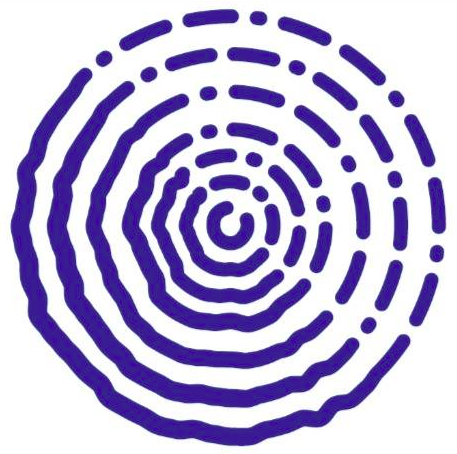Publications
"Alert Classification for the ALeRCE Broker System: The Anomaly Detector"
The Astronomical Journal, 2023
"Precision silviculture: use of UAVs and comparison of deep learning models for the identification and segmentation of tree crowns in pine crops"
International Journal of Digital Earth (IJDE), 2022
"Searching for Changing-state AGNs in Massive Data Sets. I. Applying Deep Learning and Anomaly-detection Techniques to Find AGNs with Anomalous Variability Behaviors"
Astronomical Journal, 2021
"The Automatic Learning for the Rapid Classification of Events (ALeRCE) Alert Broker"
The Astronomical Journal (AJ), 2021
"Multiband galaxy morphologies for CLASH: a convolutional neural network transferred from CANDELS"
Publications of the Astronomical Society of the Pacific, 2019
Conference Contributions
"Positional encodings for light curve transformers: Playing with positions and attention". Oral Presentation.
Daniel Moreno-Cartagena, Guillermo Cabrera-Vives, Pavlos Protopapas, Cristobal Donoso-Oliva, Manuel Pérez-Carrasco, Martina Cádiz-Leyton Paper Oral Presentation BibTex"Multi-Class Deep SVDD: Anomaly Detection Approach in Astronomy with Distinct Inlier Categories". Poster Presentation.
M. Pérez-Carrasco, G. Cabrera-Vives, L. Hernández-Garcıa, F. Förster, P. Sánchez-Sáez, A. Munoz Arancibia, N. Astorga, F.E. Bauer, A. Bayo, M. Cádiz-Leyton, M. Catelan, P.A. Estévez Paper Poster BibTex"Con2DA: Simplifying Semi-supervised Domain Adaptation by Learning Consistent and Contrastive Feature Representations"
Manuel Pérez-Carrasco, Pavlos Protopapas, Guillermo Cabrera-Vives Paper Presentation BibTex"Matching Embeddings for Domain Adaptation"
Manuel Pérez-Carrasco, Guillermo Cabrera-Vives, Pavlos ProtopapasTeaching Experience
University of Concepción, Chile
Data Analysis
School of Engineering Department
Lecturer 2024-2Designed curriculum, lectures, assessments, laboratories, and homework for audiences of ~40 students.
Deep Learning
School of Engineering Department
Lecturer 2022-1, 2023-1, 2024-1Co-taught with Professor Guillermo Cabrera. Co-designed curriculum, lectures, assessments, laboratories, and homework for audiences of ~30 students.
Introduction to Data Science
School of Engineering Department
Lecturer 2021-2, 2022-2Co-taught with Professor Guillermo Cabrera. Responsible for designing lectures, assessments, laboratories, and homework for audiences of ~30 students.
Advanced Topics in Machine Learning
Department of Industrial Engineering
Lecturer 2020-1Co-taught with Professor Rodrigo de la Fuente. This elective course aimed at graduate and undergraduate students of engineering focused on deep learning fundamentals. The course covered neural network architectures such as MLP, CNN, and RNN, as well as advanced topics like reinforcement learning, representation learning, and deep generative models.
Introduction to Machine Learning
Department of Industrial Engineering
Lecturer 2019-2Co-taught with Professor Rodrigo de la Fuente. This elective course aimed at undergraduate students covered the basics of machine learning, including supervised learning (Regression, Logistic regression, decision trees, Random Forest, SVM) and unsupervised learning (k-means, PCA).
Machine Learning for Business Intelligence
Department of Industrial Engineering
Teaching Assistant 2018-1Responsible for recitations and laboratory sessions. This course mixed classical machine learning with deep learning algorithms, showing how to apply these techniques to large-scale industry problems.
System Modelling
Department of Industrial Engineering
Teaching Assistant 2017-2Responsible for recitations. This mandatory course for 2nd year Industrial Engineering students taught mathematical modeling and solving basic operation research problems using linear programming.
Harvard University, Cambridge, MA, USA
Data Science 2: Advanced Topics in Data Science
Institute for Applied Computational Sciences
Teaching Fellow 2019-1Served as teaching fellow for this mandatory course of the Master in Data Science program. Responsible for office hours, grading, and guiding student projects. The course covered advanced methods for data wrangling, data visualization, deep neural networks, and statistical modeling.
Education
MSc. Computer Science
University of Concepción | Mar. 2017 – Oct. 2019 | GPA: 6.1/7.0
- Thesis: "Semi-supervised Adversarial Variational Domain Adaptation for Image Classification" (Perfect 7.0/7.0 Grade)
- Research work received best student paper award at Astroinformatics 2019 conference, Caltech
B.S. Industrial Engineering
University of Concepción | Mar. 2013 – Sep. 2018 | GPA: 5.9/7.0
- Undergraduate honor research thesis published in Publications of the Astronomical Society of the Pacific


